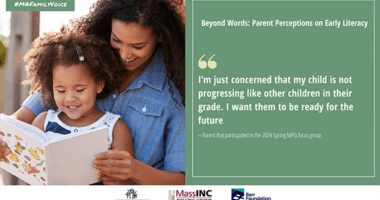Closing the achievement gap: 2005 NAEP Reading and Math results show some gains, but slowing progress
(Washington, D.C.) - Public school results for the 2005 National Assessment of Educational Progress (NAEP) released today by the U.S. Department of Education show improvement in fourth-grade reading and math, but offer a decidedly less heartening picture for eighth-graders in reading, whose scores in that subject actually dropped over the last two years.
”These results are consistent with what we’ve seen on state assessments and the recently released NAEP Long Term Trend Assessment - more growth in elementary than in secondary grades, more gains in math than in reading,” said Kati Haycock, director of the Education Trust. ”It’s time we got very serious about bringing reform to our secondary schools, particularly to help older students grasp the critical reading skills they will need to be successful in high school, college, and the workplace.”
The news out of NAEP is most encouraging in fourth-grade mathematics, where all groups of students - Black, Latino, White, Asian, Native American and low-income children - posted the highest scores recorded on the Main NAEP test, which has charted national and state performance in reading and math since the early 1990s. In reading, almost all groups of students, with the exception of Native American children, also scored at their highest levels since the first administration of the Main NAEP.
The gaps between African-American and Latino fourth-graders and their White peers are narrowing. Progress in reducing the number of minority students performing at the very bottom of achievement - those who score at the below basic level - has been especially profound. Since 2000, the proportion of African-American fourth-graders performing below basic in math has declined from 65 percent to 40 percent.
While student performance is moving in the right direction in reading and math in Grade 4 and in math in Grade 8, the NAEP results also show that progress slowed between 2003 and 2005 a troubling development.
“We can’t lose sight of the gains students have made in recent years - particularly after the dismal results for poor and minority children that we saw during the 1990s. But neither the students nor our country can afford any slowdown in academic improvement, so these results are cause for concern,” Haycock said. ”The No Child Left Behind law serves an important function, by shining a bright spotlight on how all students are performing academically. Indeed, without it, we would not have this snapshot of student performance in every state.”
”But laws don’t educate students; schools do. To accelerate student growth, far more schools need to do what high-performing schools do: Make sure that all groups of students get their fair share of quality teachers and other resources, provide all students with a rich and challenging curriculum, and help struggling students catch up,” Haycock said.
Although the news in eighth-grade reading is discouraging, there are some bright spots in the performance of eighth-graders. Mathematics scores moved up by two points overall since 2003, and today’s eighth-graders are doing considerably better than their counterparts back in 1990. The results are the highest ever in math on the Main NAEP among eighth-graders in every demographic group. And the gaps between African-American and Latino eighth-graders and their White peers also narrowed in math between 2003 and 2005.
The gains we have seen are not nearly enough. In too many states, unacceptably large gaps persist between groups of young people. These translate into real deficiencies in students knowledge and skills. In fourth-grade math, for example, African-American students in 37 states earned scale scores below the level at which students demonstrate that they can perform straightforward mathematical tasks like classifying numbers as even or odd.
”The absence of really bad news isn’t the same as good news, and if youre concerned about education and closing achievement gaps, there’s simply not enough good news in these national results,” said Ross Wiener, Education Trust policy director.
A Deeper Look
National averages often can hide important differences among states. Its important to look beneath those averages, both to identify and to learn from states that are ahead of the pack and to note those that need to pick up the pace of their improvement efforts.
The picture at the state level is quite mixed. Some states made strides, even in just the past two years.
Examples include:
- Arkansas, where the scale scores in reading and math improved for every demographic group of fourth-graders between 2003 and 2005. The Latino-White gap in fourth-grade reading narrowed by 6 points, the Black-White gap, by 2.
- African-American students in Washington state were among the top scoring Black students in both subjects and grades this year.
- Several states made considerable improvements in the scores of poor children. In New Jersey, poor eighth-graders in the state scored 6 points higher in reading in 2005 than in 2003. The state also saw a 6-point increase in the math scores of poor fourth-graders during the same time period. In Massachusetts, the math scores of poor eighth-graders improved by 12 points in the past two years. And in Idaho, the scores of poor students have increased in both subjects and grades between 2003 and 2005.
Some states saw declines. Eighth-graders lost ground in reading in multiple states. In North Carolina, the reading performance fell for every demographic group of fourth-graders.
Moreover, large gaps between groups of students persist in too many states. For example, Massachusetts posted the highest scores in both subjects and in both grades, but has among the biggest Latino-White reading gaps in the country.
Neighboring Connecticut has among the largest gaps in achievement between poor students and their more affluent peers in reading and math at the fourth- and eighth-grade levels. And since 2003, the eighth-grade math performance of Connecticut’s African-American and Latino students has declined by 6 and 5 points, respectively.
”As always, when you look underneath the overall averages, different story lines emerge,” Wiener said. ”The challenge now is to learn from the places that are making the most progress — and accelerate improvements.”
###
The Education Trust works for the high academic achievement of all students at all levels, pre-kindergarten through college, and forever closing the achievement gaps that separate low-income students and students of color from other youth











